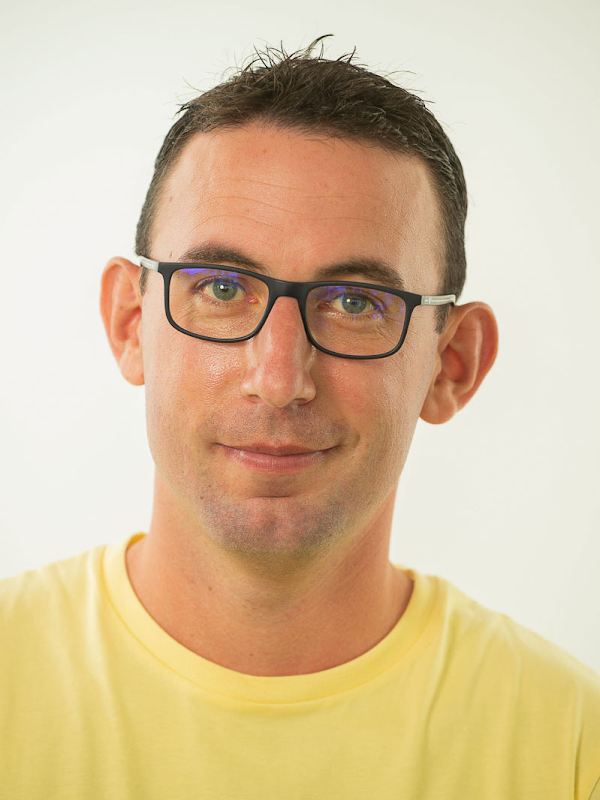FinOps in Fashion: Why L’Oreal uses a business-first culture to build collaboration

Sarah McMullin
Group Product Manager, Google Cloud Billing
For our FinOps Visionaries series, Antoine Castex explains how the beauty leader uses FinOps to blend products like a fine palette.
As organizations continue to push new and more businesses onto the cloud, many are still mindful about the potential cost of innovation on their IT budgets. One recent McKinsey study found that a majority of respondents were not capturing as much value as they expected.
One leading way for organizations to not only manage costs but also enhance alignment across teams and spur even more enthusiasm and problem solving is the practice known as FinOps. Some are leaders in this area, driving growth and value across their operations, and we’re excited to share their insights in this new series, FinOps Visionaries.


In this edition, we chatted with Antoine Castex, group data architect at L’Oréal, about the role FinOps practices play in the beauty giant’s cloud strategy.
As the world’s uncontested beauty leader, L’Oréal has over a century of experience in delivering iconic, innovative products and services that have helped shape the face of the beauty industry. You might assume with billions in annual revenue that optimizing cloud spend falls farther down the list of priorities at L’Oréal — but you’d be wrong as wearing stripes and checks together.
“When it comes to cloud, the most important thing is not to specifically focus on the use case, but the way we consume,” Antoine said. “The shared responsibility model we have adapted between the IT team and the business is very clear. You are accountable for the resources you will have in your cloud project. This doesn’t mean you have to be an expert, it means that you have to explain your decision to use a product instead of another one.”
Every use case at L’Oréal undergoes a rigorous approvals process through a technical design authority. When a business team has an idea, they are required to meet with all the group architects, including Antoine, and present a detailed explanation of their proposal. This includes business drivers, technical requirements, timelines, internal sponsorship, security and data governance approvals, as well as a sustainability assessment — an increasingly important factor for making cloud investment decisions.
Only after the design authority has given its notes and approval can the team take the use case to L’Oréal’s top management for funding to build and deploy.
Formalized FinOps practices, such as this one, help connect multiple stakeholders across teams, ensuring that technology, business, and security stakeholders communicate and collaborate together to make better strategic technology decisions when prioritizing projects and selecting solutions that align with overall strategy.
It’s just one of the many ways leading organizations like L’Oréal have adopted FinOps to not only help manage costs but really be a driver of value and coordination at every level of the business.
Bringing together budgets, teams, ideas
The new design authority was implemented in part to address FinOps issues of the past. Previously, there had been challenges such as rationalization of global cloud costs and avoiding overlap in projects.
For example, the team discovered a lot of overlapping work and duplicate initiatives when first moving towards a FinOps model. Without cross-functional collaboration and communication, two different markets might implement and deploy the same technology for similar activities without any knowledge of the other project.
Sometimes, people create resources without understanding the impact behind it. With this budget alert and automatic disconnection of the solution, we avoid a big impact and everyone understands.
Another example Antoine shared was how L’Oréal prevents unexpected spikes in costs from getting out of hand. Every new cloud resource is always set up as a separate project and required to have a set monthly consumption budget using Google Cloud Billing budgets. However, these budgets are monitored daily and if a project exceeds a defined threshold, it is automatically flagged and disconnected.
“You have to go through a technical editing process to figure out why a project was disconnected,” Antoine explained. “Was there a leak of data? Was there an attack? Was there a misunderstanding on how to implement a project? Sometimes, people create resources without understanding the impact behind it. With this budget alert and automatic disconnection of the solution, we avoid a big impact and everyone understands.”
Once the problem has been identified, discussed, and resolved, the project is reconnected and monitored closely for an agreed amount of time to ensure that everything is aligned.
Ballooning costs is just one of the unforeseen pitfalls of cloud adoption, especially when people aren’t properly educated about the costs of their activities or controls aren’t put in place to prevent overprovisioning. Antoine saw this firsthand when the company began consolidating all its internal and external data from across the business into L’Oréal’s Beauty Tech Data Platform, which was built on Google Cloud’s enterprise data warehouse.

“We discovered that the more data you have, the higher the cost when you make a mistake because your mistake isn’t on a megabyte — it’s on a terabyte or a petabyte,” he said. “We were having problems with queries that cost thousands of euros. When you run that query multiple times a day, you can imagine how big the impact is.”
However, Antoine said having the proof to show that optimizing queries could significantly reduce costs — from thousands down to around ten — was key in gaining the approval and budget allocation to spend time and hire more support to optimize queries to reduce latency and cost.
FinOps is essential for AI
These same principles are helpful for defining future investments, such as generative AI. In particular, Antoine cautioned that many organizations get caught up in the buzz and jump in without considering all the reasons to make an investment.
“The challenge with AI and machine learning is that it’s not yet next-generation in terms of consumption of resources,” Antoine said. “We have to be sure when people need a Ferrari to do something simple, they really need a Ferrari or maybe they only need a bike. If a bike is enough, we will use a bike.”
Antoine’s final piece of advice to organizations adopting FinOps models is to evaluate cloud providers based on how well they align with your own values, culture, and way of working. L’Oréal’s commitment to innovation means adopting solutions that allow them to fail fast, implement new ideas, and support other future initiatives, such as sustainability.
“Innovation is at the heart of L’Oréal, and it’s the same for Google,” Antoine said. “We know we can fail, but we fail fast. We fail, we start another project. If we don’t innovate, the world will be the same in the next 20, 50, or 100 years, which is not a problem at all, but is it interesting? I’m not sure.”



